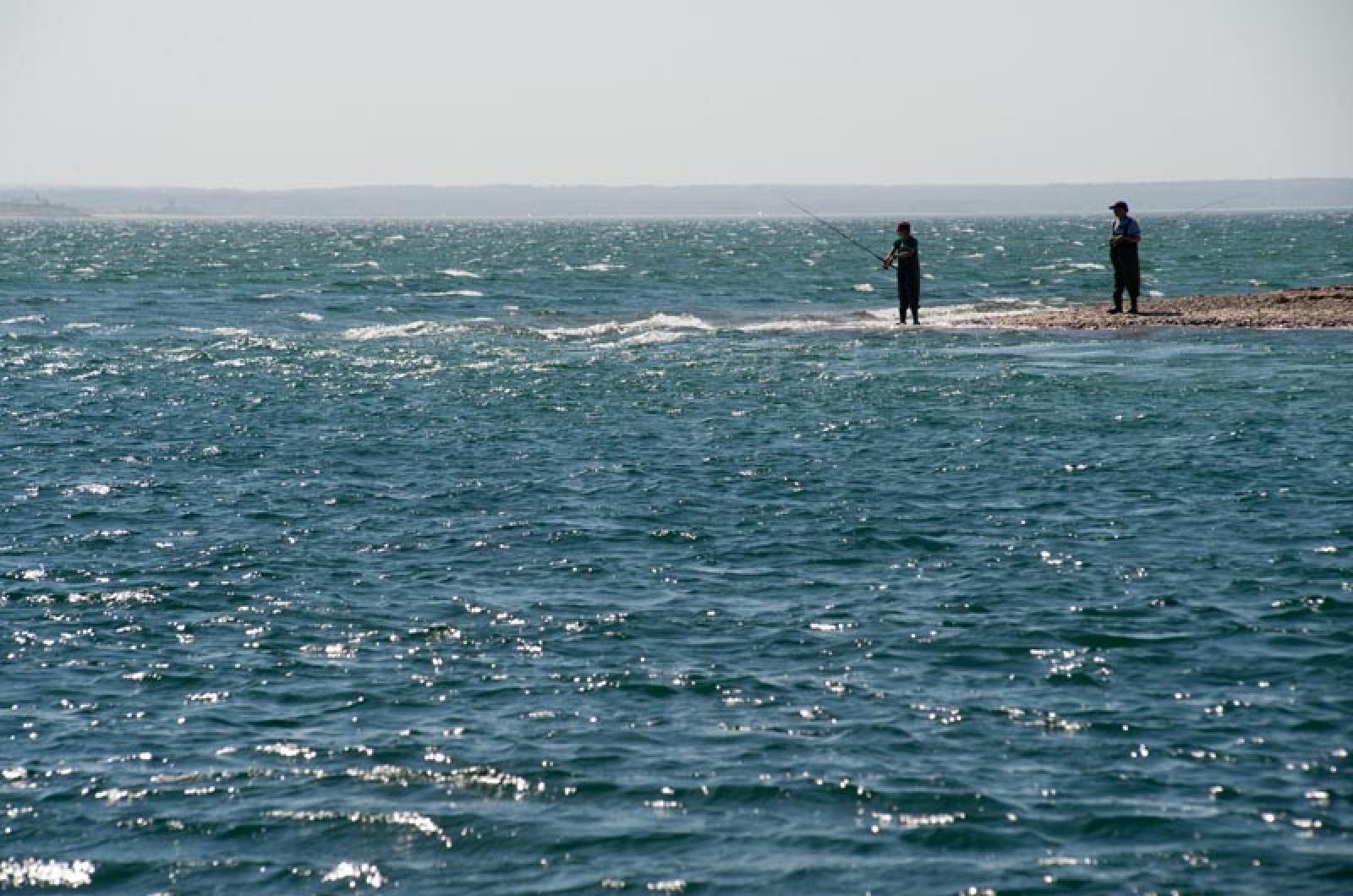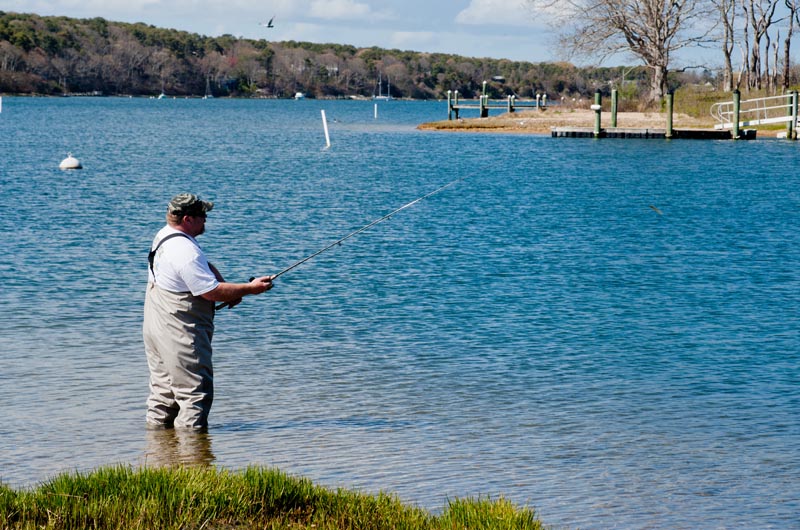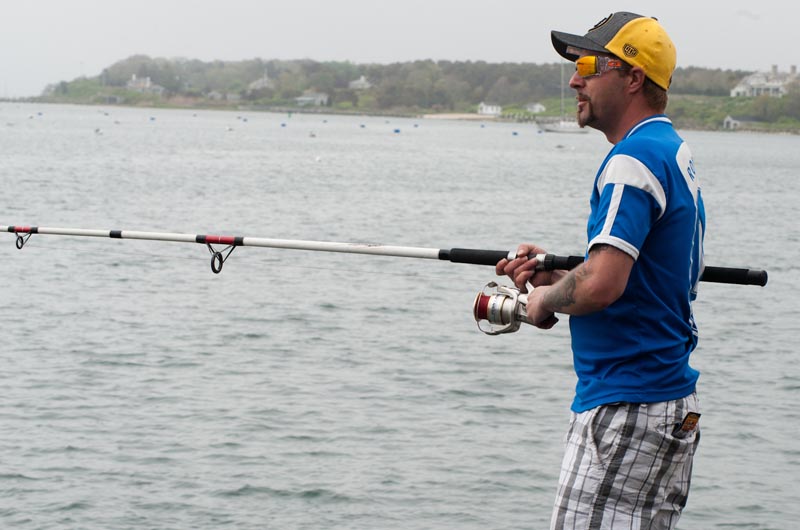There is a lot more to cheer about on the waterfront this spring when it comes to recreational fishing than a year ago. The fish are here and the list of species is long.
Atlantic mackerel showed up in April. This is a fish we call precious today, although decades ago it was a common spring fish.
Schools of swirling mackerel were spotted close to the surface near the Gay Head Light on their way to Cape Cod Bay, swimming up through the Cape Cod Canal. They always stop over and visit the Vineyard for a couple of days of feeding. Mackerel jiggers, also called the “mackerel fleet,” were out in force.
Mackerel are a hearty fish, long and narrow. Their skin isn’t like most fish. They don’t have big scales. They are silver and dark blue in color.
Mackerel were once the fish of the day in the spring, and we remember having it with eggs for breakfast, as it was easy to prepare. In more recent times, as mackerel became scarce, the popular item was upgraded and with a little more effort became smoked mackerel.
While many mark the arrival of spring with the sound of the spring peeper, blossoming daffodils and an osprey silhouetted by the bright blue sky, reports of returning herring were welcome seasonal news. Herring in any numbers in southeastern Massachusetts is particularly good news for us because the fish have been in trouble for years.
Herring, also called alewives, are tied to the Vineyard in more ways than just swimming in our waters. Most of the alewives that return to spawn in Vineyard waters began their life here. Herring are anadromous. They spawn in freshwater and then spend most of their lives in the ocean.
Adult herring return to where they were born. They return to Squibnocket, Lagoon Pond, Edgartown Great Pond and Crackatuxet Pond to spawn again. Martha’s Vineyard used to export herring by the barrel, along with mackerel. Now they are both precious and far less bountiful. In recent years, overfishing and declining habitat along the eastern seaboard have brought herring into serious concern. In November 2005 Massachusetts fisheries regulators imposed a three-year moratorium on the commercial and recreational fishing of herring. That moratorium, now regional, has been renewed repeatedly and is permanent with some exceptions. The National Marine Fisheries Service identified alewives and blueback herring as a “species of concern” in 2006.
You can’t harvest herring under the moratorium. If you saw a fisherman near a herring run at the head of Lagoon Pond or the southern end of Lake Tashmoo, they weren’t fishing for herring. Herring are food for striped bass, bluefish and many larger fish, and the anglers at the herring runs were most likely fishing for striped bass. Anyone who likes to eat a sport fish has to like herring.
Squid season has been mixed. If you talked to an angler at Memorial Wharf in late April, he or she was happy with this particular harbinger of the season. There were quite a few nights when anglers showed up at the wharf and with the right jig they could get a bucket full in just a short time. Unfortunately, “plentiful” isn’t the right word for May. Hopefully June will be better.
The best news of this fishing season is the arrival of a fish we haven’t seen in a while. Weakfish are being caught all around the Island. What a weird name!
Weakfish, also called sea trout and squeteague, are perhaps one of the tastiest fish in our waters. It was called sea trout not only for its appearance but also for its taste. Its popular name comes from its weak mouth. This is not a fish with fierce teeth like bluefish or a big sturdy mouth like striped bass.
Weakfish are showing up at the Norton Point opening, at the Edgartown Lighthouse beach and at many other places around the Island.
Many years ago weakfish was one of the top four fish in the Martha’s Vineyard Striped Bass Derby. Norman Benson, a trap fisherman at Lambert’s Cove, caught weakfish by the truckload before the 1950s and he’d ship it regularly to the mainland.
Cooper A. Gilkes 3rd, who runs a tackle shop in Edgartown, noted that he still remembers well the last time he and his wife had weakfish for dinner. Even though it was 20 years ago, the couple remembers the details.
The fillet was placed on a piece of tin foil. Onions, green peppers and crushed tomatoes were sprinkled on top. The fish was then covered with another sheet of tin foil and broiled in the oven for a short time.
If a fish tastes so good every bit of the cooking process is remembered for 20 years, it has to be worth having again.








Comments
Comment policy »